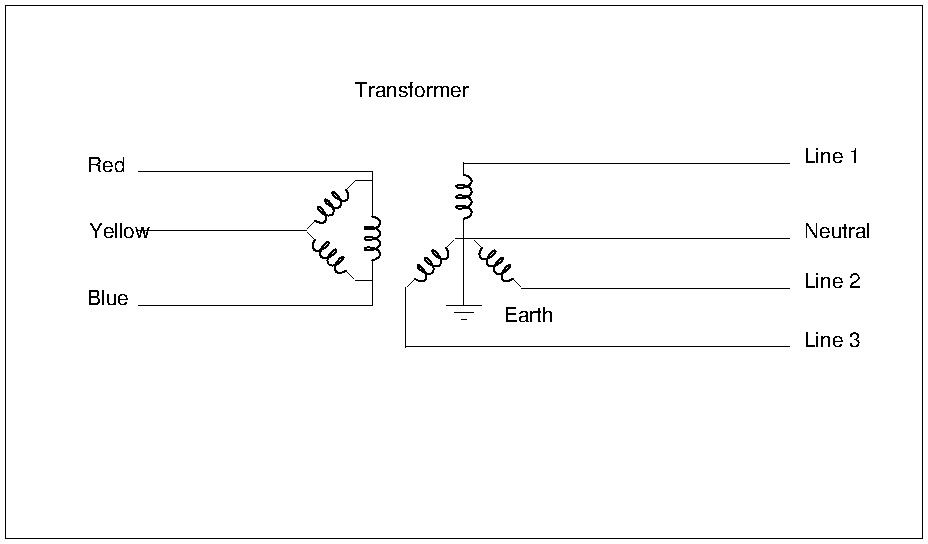As Les said, with a diagram:

The trick is in the transformer which has six windings. Three wires arrive on the left where the transformers primary windings are connected in a triangle. As the arrangement looks a bit like the greek letter Δ, it's called 'Delta'. The three-wire arrangement is excellent for distribution. It's self-balancing and minimises the amount of wire needed.
For most domestic purposes 3-phase is a pain in the bum. Most appliances work well with the single phase. This is provided by the transformer. On the secondary side (right side of diagram) the three windings are connected as a star. The centre point is neutral and it provides a return path for 3 separate single phase lines. Usually these are kept well apart because the 'Lines' are at different potentials to each other, but the wiring still allows three-phase customers access to all three phases.
The 'neutral' is not really neutral either. To reduce the danger of electric shock the neutral point of the star is earthed at the substation. As we, our homes, and the neutral are all earthed, the neutral wire isn't dangerous even though it carries the return current. This is clever stuff: the effect is that only one wire in the home is 'hot', and that can be rendered safe with a fuse. Also, very small leaks to earth can be detected and used to break the circuit.
Of course it can go wrong. Getting across two of the Line wires will hurt because they are not at the same potential. Neutral ceases to be neutral if the earth connection fails at the transformer. Breaking the neutral wire on the supply side can have 'interesting' effects too.
Dave
NJH.





